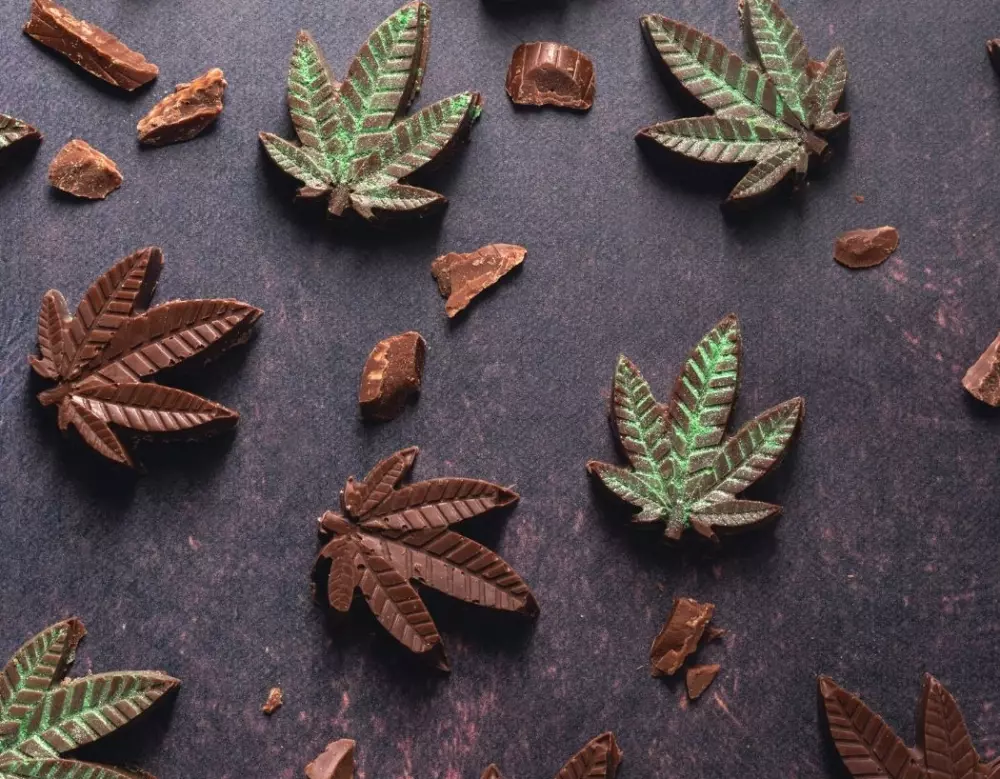Who amongst us has not made a batch of pot brownies, eaten a few, waited, didn’t feel anything, and had some more? And then some more. And then some more. And then, oh boy, did you feel something. Or perhaps you took a dose of an edible one time and felt nothing, but the same product gave you the trip of a lifetime another day? How do edibles work?
What is it about edibles that produces a high so vastly different than we experience when smoking cannabis? Why do they take so long to take effect, hit us with increased potency, and last for hours — or sometimes, not even work at all?
There’s a lot of science behind this age-old question at the heart of the weed brownie, so first, let’s take a closer look at the molecule that makes it all happen: THC.
THC isn’t just THC. It exists in a variety of formats depending on a wide range of conditions. First, THC exists in its inactive acid form, THCa, in the raw plant. Whether you’re smoking cannabis or eating it, the first step in unlocking THC’s psychoactive powers is called decarboxylation, wherein THCa converts to psychoactive delta-9-THC when heat or pressure is applied. But delta-9-THC is metabolized differently by various systems in the body, so the way in which cannabis is consumed matters, and can result in widely varying onsets, durations and effects.
The Science of Cannabis Edibles
When vaping or smoking cannabis, delta-9-THC passes through the lungs and enters the bloodstream before going on to the brain, where it binds with CB1 receptors. Because these cannabinoids are nearly-instantaneously able to cross the blood-brain barrier, THC consumed in this method will have a rapid onset and a shorter duration, lasting up to a few hours. Eating edibles, on the other hand, requires the body to process THC in a different way. When you consume cannabinoids in food form, they go through the digestive system like anything else you’re eating, and are absorbed through the walls of the stomach and intestine. Delta-9-THC is then slowly carried to and metabolized by the liver through a process called the first pass effect, which converts delta-9-THC into a derivative known as delta-11-THC, which then passes through the blood brain barrier and binds with CB1 receptors in the brain. Because THC in edibles follows a longer pathway to the brain than with smoked THC, edibles have a delayed onset, and can take anywhere from 45 minutes to two hours to take effect, depending on your metabolism, endocannabinoid system, and physiology. Moreover, delta-11-THC, the derivative metabolized by the liver, has been shown in studies to be more potent than delta-9-THC, which is why eating edibles can result in a much more intense, long-lasting high.Smoking vs. Eating Weed
Due to its potency and long activation time when consumed in edible form, a lower dose of THC is needed to induce a high. If an eighth of cannabis flower (3.54 grams) is 17% THC, it contains 601 mg. THC. Imagine how high you’d feel, say, smoking a gram of that eighth. Now, imagine how you’d feel if you ate a 170 mg. edible, the amount of THC in that gram. Another complicating factor when comparing smoking 170 mg. THC versus eating 170 mg. THC is the varying bioavailability between the two. When smoking cannabis, THC consistently has around a 30% absorption rate through the lungs. Because edibles go through the first pass effect in the liver, as little as 6% of a dose is eventually absorbed into the bloodstream. Because there are so many variables along the way as the body metabolizes THC in edibles, you may have inconsistent experiences with the same dose or product, depending on a variety of factors.Developments in the Edibles Market
Today’s marketplace is rolling out a variety of products aimed at increasing bioavailability and providing a more consistent experience. These products include drinkables, infused beverages utilizing modern technologies that reduce onset and can enhance potency. Because cannabinoids are famously not-water soluble, modern beverage makers have relied on nano-particulate technologies to seamlessly integrate tiny, tiny cannabinoids into beverages. Because these small particles are able to be absorbed through the mouth and upper digestive track, they are more easily and rapidly absorbed and can pass the blood brain barrier, resulting in effects that can be felt within 15 minutes, and with a shorter duration. These days, there are also a few edibles manufacturers using similar nanoparticulate technology to enhance the bioavailability of their products, so look for edibles that are “rapid onset” or “fast-acting” if you’re looking to avoid the delayed onset of standard edibles.Always Go Low & Slow
Understanding the science behind edibles is key to helping you have a more enjoyable experience with edibles, but it’s always helpful to have a few rules to follow. Here are a few quick tips to make sure you’re having a good time on edibles.- Know Your Dose: If you know how much of an edible to you like to use, great! If not, follow this golden rule: Start low, go slow. A low dose is 2.5 – 5 mg.
- Be Patient: If you don’t feel anything yet, don’t panic! It can take up to two hours for edibles to take effect. Wait at least one hour before smoking or eating any more cannabis.
